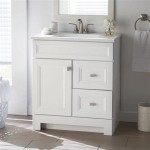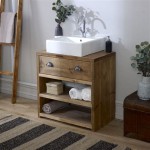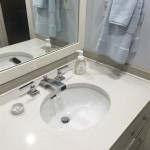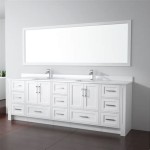How To Fix a Drain in a Bathroom Sink
A clogged bathroom sink drain is a common household plumbing issue that can often be resolved without professional assistance. This article outlines several methods for clearing a blocked drain, ranging from simple DIY solutions to more involved techniques. Understanding the potential causes of a clog can help determine the most effective approach.
Identifying the Cause of the Clog
Before attempting any fix, it is helpful to understand what might be causing the blockage. Common culprits include hair, soap scum, toothpaste, and mineral buildup. If the blockage is sudden and complete, it is more likely to be a single object, such as a small item dropped down the drain. A slow-draining sink often indicates a buildup of debris over time.
Simple Solutions for Clearing a Clog
The first line of defense against a clogged drain involves simple, readily available tools and techniques. Boiling water can sometimes melt away soap scum or grease contributing to the clog. Pouring a kettle of boiling water down the drain can be surprisingly effective. A mixture of baking soda and vinegar is another common household remedy. Pouring baking soda followed by vinegar into the drain creates a chemical reaction that can help break down organic matter. Allow the mixture to fizz for about 30 minutes before flushing with hot water.
A plunger can be a useful tool for dislodging blockages. Ensure there is enough standing water in the sink to cover the cup of the plunger. Cover the overflow drain with a wet cloth to create a better seal. Plunge vigorously up and down for several minutes, maintaining the seal. If the water drains, the clog has likely been cleared.
Using a P-Trap to Remove Debris
The P-trap is the curved pipe located underneath the sink. It is designed to trap debris and prevent sewer gases from entering the house. This trap often becomes a collection point for clog-causing materials. Place a bucket under the P-trap to catch any water or debris. Loosen the slip nuts that connect the P-trap to the drainpipe and tailpiece. Carefully remove the P-trap and clean out any accumulated debris. Once clean, reassemble the P-trap, ensuring the slip nuts are tightened securely to prevent leaks.
Employing a Drain Snake or Auger
For more stubborn clogs, a drain snake or auger can be a more effective solution. A drain snake is a flexible cable with a coiled end that can be inserted into the drain to break up or retrieve the blockage. Insert the snake into the drain opening and rotate it clockwise while pushing it forward. If resistance is met, continue rotating and pushing until the snake moves freely. Retract the snake, cleaning any debris from the coiled end. Flush the drain with hot water to ensure the clog is completely cleared.
Dealing with Hair Clogs
Hair is a frequent culprit in bathroom sink clogs. A simple tool designed specifically for retrieving hair from drains is a zip-it tool. This inexpensive plastic strip with barbs can be inserted into the drain to snag and remove hair. Alternatively, a straightened wire coat hanger with a small hook at the end can also be effective in retrieving hair.
Preventing Future Clogs
Regular maintenance can help prevent future clogs. Install a drain strainer to catch hair and other debris before they enter the drain. Periodically flush the drain with boiling water or a baking soda and vinegar mixture to help break down soap scum and grease buildup. Avoid pouring grease or oil down the drain. These substances can solidify and contribute to clogs.
When to Call a Plumber
If the clog persists after attempting these methods, it may be time to call a professional plumber. A plumber has specialized tools and expertise to diagnose and resolve more complex plumbing issues. Persistent clogs could indicate a more significant problem within the plumbing system.
Using Chemical Drain Cleaners
Chemical drain cleaners can be effective at dissolving clogs, but they should be used with caution. These cleaners contain harsh chemicals that can damage pipes and create hazardous fumes. Always follow the manufacturer's instructions carefully and wear appropriate protective gear, such as gloves and eye protection. If chemical drain cleaners are used frequently, it is important to inspect pipes for any signs of corrosion or damage. Regularly using chemical drain cleaners is not recommended. Consider them as a last resort for occasional stubborn blockages.

How To Replace A Rusty Sink Drain Howtolou Com

5 Natural Ways To Unclog A Bathroom Sink Hiller How

Bathroom Sink Drain Leaking Around Threads Premier Plumbing Inc

How To Replace A Bathroom Sink Drain

4 Ways To Fix A Bathroom Sink Leaking Underneath Fast Easy

New Bathroom Sink Drain Leaks At Threads
How To Install Bathroom Sink Drain Queen Bee Of Honey Dos

How To Replace A Rusty Sink Drain Howtolou Com

How To Unclog A Bathroom Sink Hana S Happy Home

How To Fix A Bathroom Sink That Won T Drain Bfp Bay Area
Related Posts







